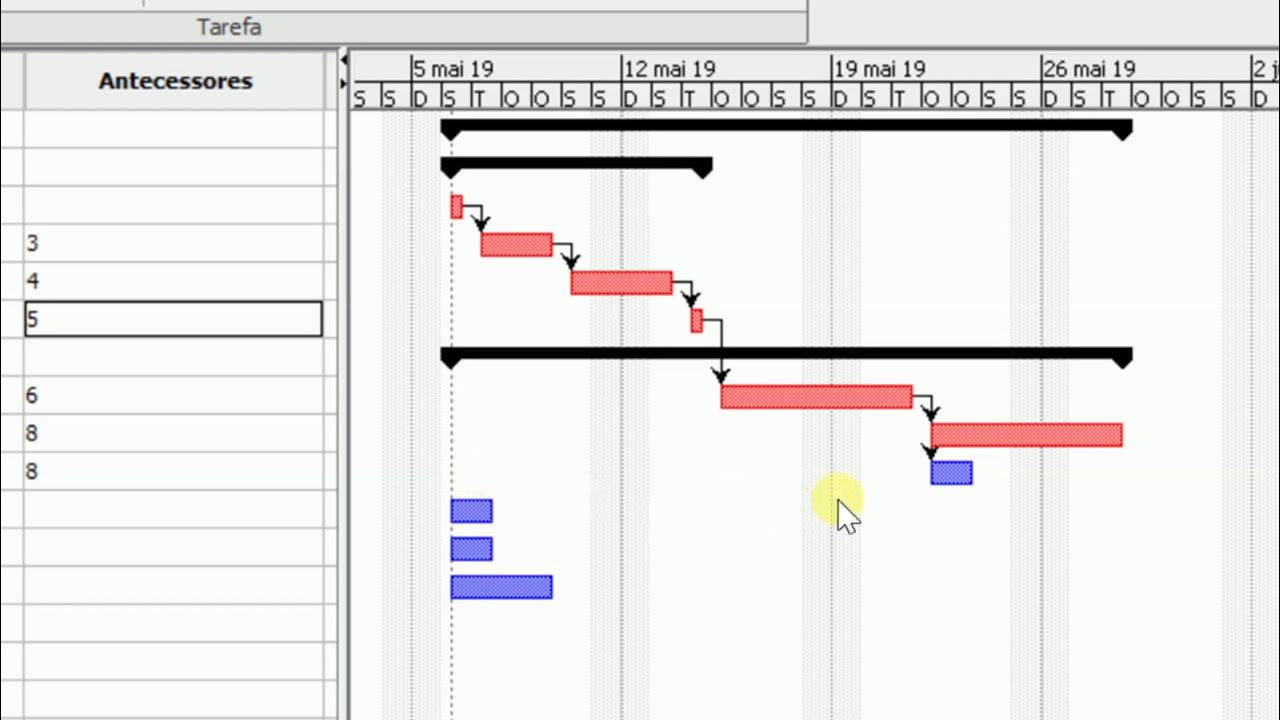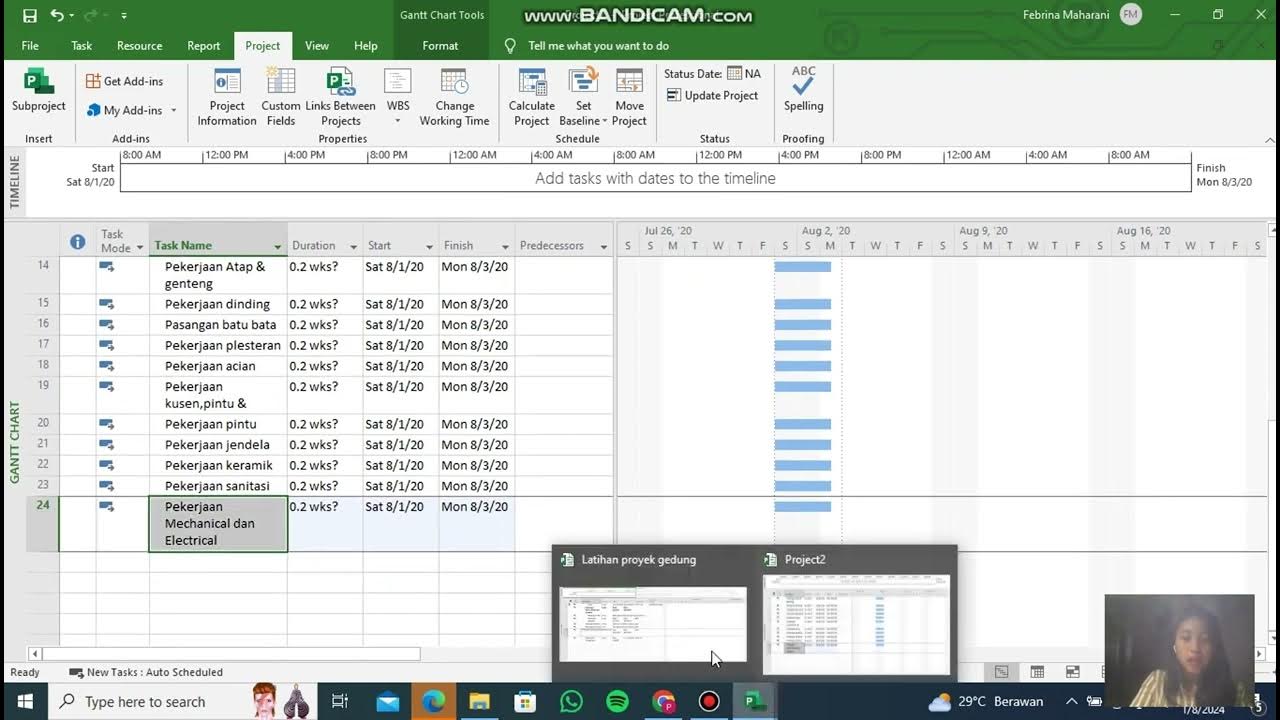How To Make A Construction Project Schedule
Summary
TLDRThis video tutorial guides viewers on crafting a construction project schedule, emphasizing the importance of establishing a correct overall project duration and end milestone. It suggests breaking down the task into manageable parts by scheduling individual pages of plans, then logically tying them together. The presenter stresses the visibility of the schedule, involving trade partners for input, and ensuring the schedule is realistic and executable with proper resources, ultimately leading to a successful project timeline.
Takeaways
- 📅 Importance of Correct Timing: Ensuring the right overall project duration and end milestone is crucial for an accurate construction schedule.
- 🔍 Phase-by-Phase Planning: Breaking down the project into phases and planning each phase separately helps in managing the complexity of the project.
- 👷 Trade Flow Essential: Trades should flow logically from one area to another without being overburdened to maintain the project's pace.
- 📚 Study the Drawings: Gaining a high-level understanding of the project through detailed study of the drawings is foundational for effective scheduling.
- 📝 Page-by-Page Scheduling: Creating a schedule by focusing on individual pages of the drawings prevents feeling overwhelmed and allows for a more manageable approach.
- 🔗 Logic Ties for Cohesion: Independent sequences from each page must be logically tied together to form a cohesive overall schedule.
- 👀 Visibility is Key: A good construction project schedule must be visible and easily understood by all stakeholders involved in the project.
- 🤝 Trade Involvement: Involving trade partners in the scheduling process is essential as they provide expert input and are responsible for the actual construction.
- 🛠️ Trade Flow in Schedule: Each part of the schedule should reflect a trade flow that is practical and feasible for the trades to execute.
- 📦 Material and Contract Readiness: The schedule must be supported by a supply chain that can deliver materials and contracts on time.
- 🏢 Coordination and Permissions: Coordination with trade partners and obtaining necessary permissions are critical for the execution of the schedule.
Q & A
What is the primary focus of the video script?
-The primary focus of the video script is to demonstrate the process of creating a construction project schedule, emphasizing the key steps and ensuring none of the important parts of the scheduling process are overlooked.
What does the phrase 'eat the elephant' refer to in the context of the video?
-The phrase 'eat the elephant' is a metaphor for tackling a large and complex task, such as creating a construction project schedule, by breaking it down into smaller, manageable parts.
Why is determining the proper overall total project duration important at the start of the scheduling process?
-Determining the proper overall total project duration is important because it sets the correct start and end dates for the project, which is crucial for planning and ensuring that the schedule aligns with the project's critical path and trade flow.
What is a 'takt plan' and how does it relate to construction project scheduling?
-A 'takt plan' is a method of breaking down the project into phases, each with its own start and end dates. It helps in ensuring that the project schedule is accurate and that the critical path is properly represented, facilitating good trade flow.
What is the significance of trade flow in construction project scheduling?
-Trade flow is significant because it ensures that tradespeople can move from one area of the project to another in an organized and efficient manner, avoiding overburdening them and maintaining a smooth workflow.
How does the script suggest approaching the scheduling of a large set of plans?
-The script suggests studying the drawings page by page, creating a sequence for the work on each page individually, and then logically tying these sequences together to form the overall project schedule.
What is the most important characteristic of a good construction project schedule according to the video?
-The most important characteristic of a good construction project schedule is visibility. It should be clear and easily understood by all stakeholders, allowing for better collaboration and execution.
Why is trade involvement essential in the creation of a project schedule?
-Trade involvement is essential because the tradespeople are the experts and builders who will execute the work. Their input is crucial for creating a realistic and executable schedule.
What are the 'critical three' aspects to watch when creating a project schedule?
-The 'critical three' aspects are material procurement, trade partner contracts, and coordination and permissions. These ensure that materials, contracts, and necessary permissions are in place for the schedule to be executed successfully.
What additional resources does the script mention for those looking to improve their construction project scheduling skills?
-The script mentions a guide with key commandments, principles, contract language, videos, and resources that are available in the description below the video, as well as the option to reach out for training, books, consulting, and project support services.
How can viewers get in touch with the presenter for further assistance or questions about construction project scheduling?
-Viewers can reach out to the presenter, Jason, via email at [email protected] for further assistance, resources, or questions regarding construction project scheduling.
Outlines

此内容仅限付费用户访问。 请升级后访问。
立即升级Mindmap

此内容仅限付费用户访问。 请升级后访问。
立即升级Keywords

此内容仅限付费用户访问。 请升级后访问。
立即升级Highlights

此内容仅限付费用户访问。 请升级后访问。
立即升级Transcripts

此内容仅限付费用户访问。 请升级后访问。
立即升级浏览更多相关视频

The 5 Phases of a Construction Project, PM Principles and Tips #24

ProjectLibre (Aula 01): Instalação e Criação de um Projeto Básico

Lec-01_Phases of Construction Project | Construction Engineering and Management | Civil Engineering

The ULTIMATE GUIDE To Building Your Home!

Piling Activity Example, Applicability of different methods to Estimate Activity Duration

Penjadwalan Proyek Gedung Menggunakan Ms.Project
5.0 / 5 (0 votes)
